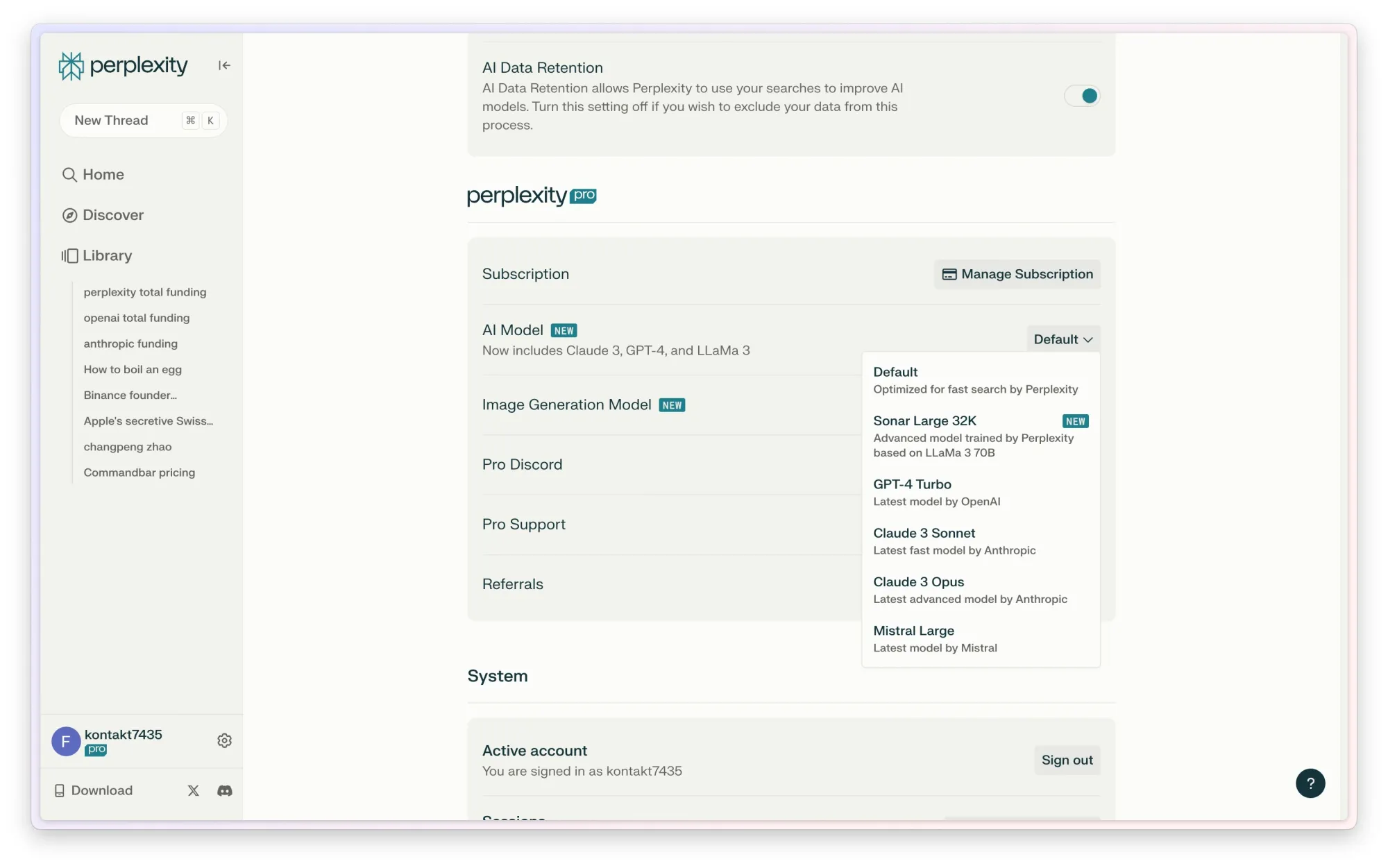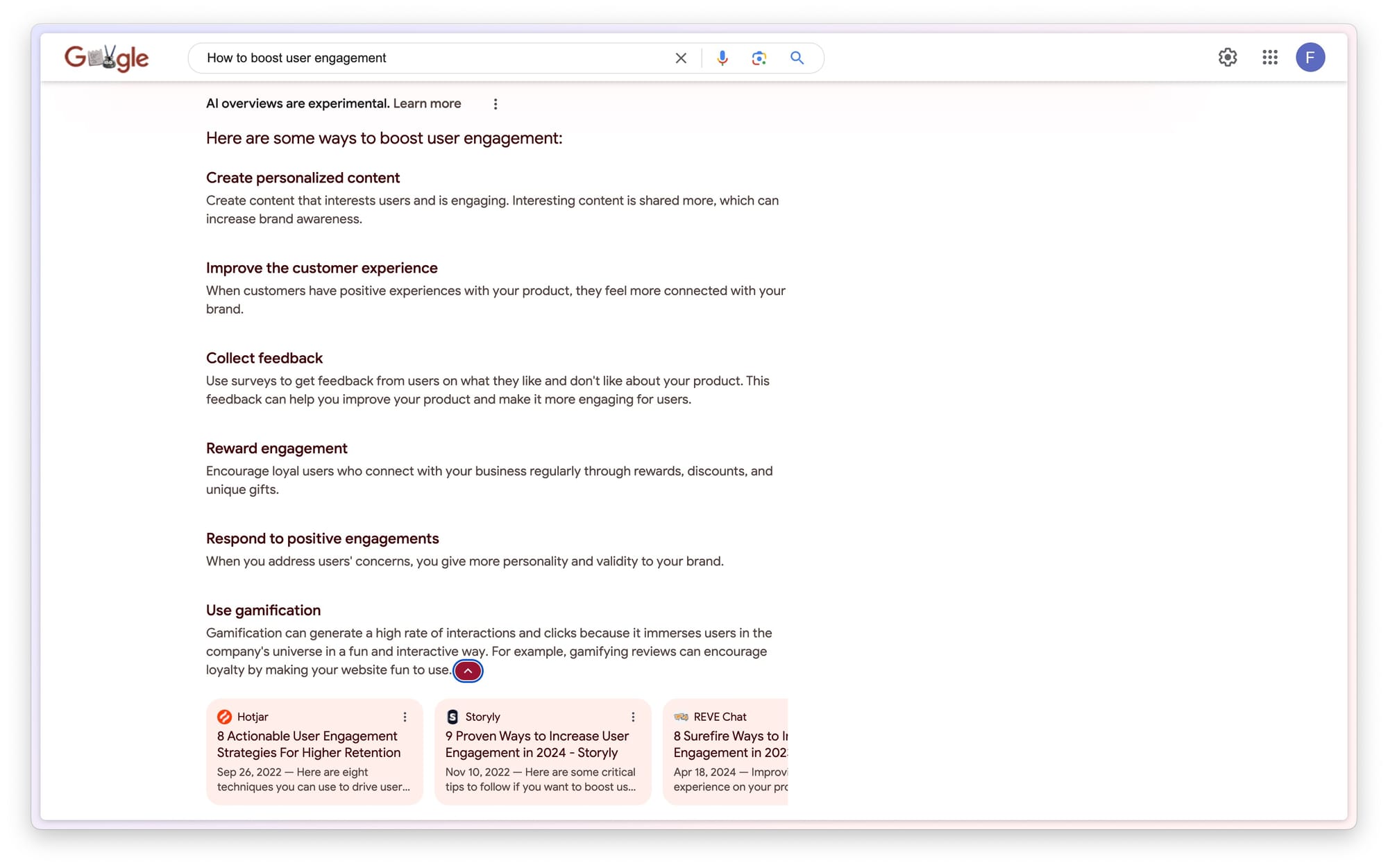For the past years, Google has looked like a billionaire who’s accomplished their lifelong pursuit of wealth, but now wonders “What's next?” Google’s mission statement to “organize the world’s information and make it universally accessible and useful” has been accomplished to the point that people want less information, not more.
Like many billionaires, Google has used its massive resources and cash flow to flirt with expensive hobbies: Smart glasses, self-driving cars, vertical farming.
It often takes a crisis to revive the hunger of an ambitious, broke 20-something in a middle-aged billionaire. AI is that crisis for Google. It suddenly has real challengers in search.
One of those challengers is Perplexity, a young startup that calls itself an answer engine. In less than two years, Perplexity amassed $20 million in ARR at fewer than 50 employees, tens of millions of users, and a valuation north of $1 billion. So many high-profile tech people sing its praises that the company has become impossible to ignore.
Perplexity’s meteoric rise has propelled it to prominence and has turned CEO Aravind Srinivas into a frequent podcast guest, conference speaker and Twitter user with 86k followers.
Srinivas’s resume is almost too perfect for someone taking on Google: He was a research scientist at OpenAI and a research intern at both Google and DeepMind.
His science background shows: While many other founders would highlight the audacity of competing with Google or rouse the audience with passionate sermons about the death of Google, Srinivas describes unseating one of the world’s biggest companies like another engineering problem to be solved with a new algorithm. I’ve seen commenters call him unhinged, but I don’t think that’s right. When publicly discussing Google’s weakness and Perplexity’s superiority, he describes the reality he sees like a research paper.
His algorithm is a product called Perplexity.
Can Perplexity kill Google?
If I had to explain Perplexity to my mom, I’d say it’s like Google had a baby with ChatGPT. Like Google, Perplexity answers queries with information from the internet. Like ChatGPT, it gives you a single answer generated using large language models. Like Google, Perplexity links you to sites it got its information from. Like ChatGPT, it gives you a single answer.
Here’s what a Perplexity result looks like:

This improves the user experience compared to Google:
- It saves the user a few clicks compared to a Google search by generating an answer directly. Users get a satisfactory answer faster. Unlike in ChatGPT, the sources are available if you want to find out more or verify correctness.
- It standardizes the interface. Because everything happens in Perplexity itself, users don’t have to learn the navigation of a new website, close annoying pop-ups, or deal with hard-to-read layouts.
Does that mean Perplexity is just a better product than Google? Not quite. With many searches, we want to get information about how to do something, learn about something or otherwise. Here, the user intent is content consumption. For those use cases, I’ve found Perplexity to be better than most SEO-ified Google results.
There are times when Google-style results are more useful: If I’m looking for a specific page (e.g. “Command AI pricing page,” a riveting read) or want to get multiple results (e.g. “Command AI blog articles,” which I’m sure you search for every day), I’d probably prefer ten blue links.
This issue relates to what we’re doing at Command AI. We focus on personalization more than most companies in our space because we believe a product should surface what a user needs in the format they need—not whatever a product manager decided could temporarily boost adoption.
But it’s unfair to compare a startup founded in 2022 to a big tech behemoth. Besides, Perplexity’s results for these things are still pretty good. It’s far more impressive that Perplexity delivers a better result than Google for so many queries.
But if winning in search was only about results, we’d have seen more convincing attempts at Google’s throne before. Winning against incumbents requires more than building a good product—it requires long-term product strategy and ways to stay sustainable. So let’s dive into what Perplexity needs to do to win in the long-term:
Is Perplexity just a wrapper? Or how Perplexity’s success becomes sustainable

People like the above like to call Perplexity a wrapper—a company reselling tokens from LLM APIs like GPT-4 and Anthropic’s Claude. The common criticism is that if you create a wrapper like a content writing tool, people could just use ChatGPT instead (or OpenAI could launch a competing tool if you get too big).
This criticism applies to many “AI companies,” but not to Perplexity. First, Srinivas has described the latency and scalability of Perplexity as requiring “hardcore engineering.” If you’ve used Perplexity, you know how much faster and better Perplexity is, even compared to the leader ChatGPT.
That said, let’s see if Perplexity’s product can become a long-term success and unseat Google.
Dependencies: Perplexity’s Achilles heel?
Perplexity exits on the interface layer. According to Aravind Srinivas, it uses a variety of things under the hood to produce its search results:
- OpenAI APIs
- Anthropic’s Claude API
- Google search rankings
- Bing search rankings
This creates obvious dependencies: If Anthropic or OpenAI revokes Perplexity’s API access to build a competitor (as OpenAI is doing), Perplexity loses its core competency.
Even if Perplexity retains access or the competing product would be worse, it would have a better cost structure because it wouldn’t have to pay for tokens. That’s in addition to differences in cash reserves: Perplexity has raised an impressive $165 million, but Anthropic’s $7.3 billion and OpenAI’s more than $11 billion dwarf that number. With AI search queries costing about 10 times as much as traditional search queries, costs become a real concern.
This potential weakness is why Perplexity has started to build its own search index and is starting to create its own large language models based on Meta’s open source LLaMa 3:

The move towards open-source models by Meta and Mistral is good news Perplexity. If Perplexity can field a model that achieves parity with GPT, it shields itself from potential threats by the vendors it currently pays to serve its results.
Monetization: Can Perplexity make ads work?
Google’s core business model has been described as the greatest business model of all time: The core product requires people to tell Google exactly what they want, which creates the perfect ad space.
On the surface, Perplexity has the same advantages. So far, Perplexity is ad-free. The product is monetized with a “Pro” subscription for $20/month (another AI company eschewing usage-based pricing). Srinivas has said this mirrors ChatGPT Plus to test if people would pay the exact same price as they do for the dominant solution.
An enterprise offering called Perplexity Enterprise Pro aims at companies who want to purchase subscriptions for their team, largely offering data privacy and security benefits.
This has led to an impressive ARR number. But if Perplexity wants to reach Google-level user numbers, it’s unlikely a small percentage of subscribers can subsidize billions of free users.
Perplexity has said that ads are coming. Soon, its results will include sponsored answers in the “related questions” section.
The ads portion might be the biggest weakness of AI search where you get one answer. On Google, the user assumes they’ll navigate elsewhere. If relevant, that elsewhere may as well be an advertiser.
With Perplexity, you get one answer that (hopefully) fulfills your intent directly. This is great for user experience, but doesn’t lend itself well to sending traffic to advertisers. Once users are accustomed to getting answers without using Perplexity, why should they click on an ad?
At Command AI, we have a similar story. We exist because pop-ups and chatbots are annoying and products should get rid of the stuff that annoys users. Instead of blanketing users with self-serving kludge, we believe products (and in-product messaging) should help fulfill end user intent.
Crossing into the mainstream
You don’t defeat Google by turning all of tech Twitter into power users. In tech, we love trying new tools because we care about software. This isn’t true for the vast majority of humans.
To most people, software products are tools that do something, not something that’s interesting for their own sake. If you work in tech, you probably haven’t seen a Word doc or .xslx file in years. But Microsoft Office is far from disrupted: Office 365 is growing at 2.5 million seats a month.
This is also true for Perplexity: Google is a verb. And while tens of millions know about Perplexity, billions don’t.
Becoming popular among software engineers in San Francisco requires a different skillset than becoming the default for a car mechanic in Poughkeepsie.
I don’t doubt that Perplexity has the skills to do so, but it will come with significant challenges. Most importantly: User trust.
It took me weeks of using Perplexity to not fact-check it on every response. I eventually found the results to basically always be accurate, but most users won’t have that patience in figuring out a new product.
Google’s response: The empire strikes back
AI has been a wake-up call for Google: At a (for such a giant company) rapid pace, Google has shipped powerful AI models like Gemini (formerly known as Bard) and integrated AI features in multiple products.
While issues like Gemini’s image generation capacity revealed issues in Google’s culture, CEO Sundar Pichai now sounds more assertive in getting the company back on track.
Perplexity still only has a tiny fraction of the search market, but Google is already responding. Its new “AI overviews” look suspiciously like Perplexity results:

Google replicated much of the interface, only moving the sources to the bottom. this doesn’t put it at parity with Perplexity. It still lacks capabilities to ask follow-up questions and its results aren’t as in-depth. But these seem like solvable problems for a company with the resources of Google.
Barring an acquisition (which seems unlikely in the regulatory environment), Google should be in a perfect position to defeat Perplexity: It has lower costs thanks to its own models, has more distribution than any other product and sits on giant cash reserves.
Aravind Srinivas doesn’t think they will: He describes that the more people use Gemini, the lower Google’s margins on advertising will become because search ads remain Google’s core business.
As Upton Sinclair said: "It is difficult to get a man to understand something when his salary depends on his not understanding it”
The future of search is the future of the internet
So far, we’ve viewed the Perplexity-Google competition in terms of how we’ve always used the internet: Find a website using search, then use the website.
But companies like The Browser Company with Arc Browser (with which Perplexity recently partnered) are probing whether we need to navigate the internet at all. Perplexity seems to ask the same question: Why should we have to go to websites if we can serve the useful information in a simpler interface?
Command AI is part of this evolution of interfaces. By improving existing interfaces, we believe we can contribute to a world where the interfaces we’ll still navigate to in the AI era. are simpler and more user-friendly.
But that’s a different story for the different day.

















